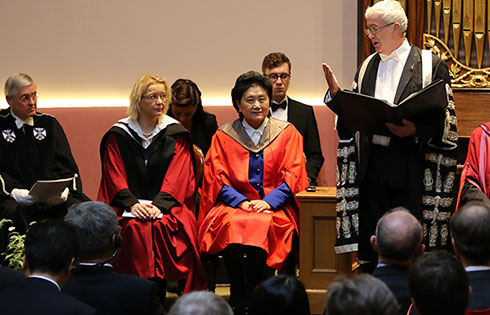NTSB: Plane flew dangerously slow before crash
Federal aviation investigators have reviewed two hours of cockpit voice recordings from the Asiana Airlines-operated plane that crashed at San Francisco International Airport, and preliminarily analysis suggests the aircraft was traveling at dangerously slow speed seconds before impact, a key official said on Sunday.
Deborah Hersman, chairman of the National Transportation Safety Board, described in the first on-scene briefing since Saturday's crash a sequence of events leading to the incident in which two Chinese teenagers were killed and several dozen other passengers injured.
Although the engines of the Boeing 777 had seemed to respond "normally" in the moments before Flight 214 crash-landed, she said, pilots allowed the jet's airspeed to reach levels "significantly below" the designated approach level of about 130 miles (113 knots, or 209 kilometers) per hour.
According to Herman, a preliminary readout of both the flight-data and cockpit-voice recorders indicate the situation in the cockpit on Flight 214 from Seoul was normal, with no discussion of problems or concerns among the crew about its visual approach to the runway on a sunny day. However, seven seconds before impact, a crew member acted to increase the speed, but by then it was too late to correct the approach.
A stall-warning had activated, letting the crew know that plane with 307 people aboard was losing aerodynamic lift. The crew finally tried to increase engine thrust and climb away from the runway — a maneuver known as a "go-around" — but instead the jet struck a seawall alongside the landing strip.
The flight had been cleared to land by visual approach, and communications between the crew and cockpit confirmed the aircraft was configured for that, Hersman said in her news conference at the airport.
"The approach proceeded normally as the plane descended," she said, citing the cockpit-recorder data. "There is no discussion of any aircraft anomalies or concerns with the approach."
Stressing that the investigation had only begun, Hersman stopped short of identifying pilot error as a probable cause of the crash. The preliminary data-based analysis, however, indicates investigators will be focused on understanding why the crew allowed the plane's speed to reach such a slow speed and then failed to take decisive action until the plane was 1.5 seconds from impact. It appears that possible failure in one of more of the plane's systems is less likely to be identified as a culprit.
Over the next few days, Hersman said, the NTSB plans to interview the flight crew and continue other technical investigations to determine the cause.





















